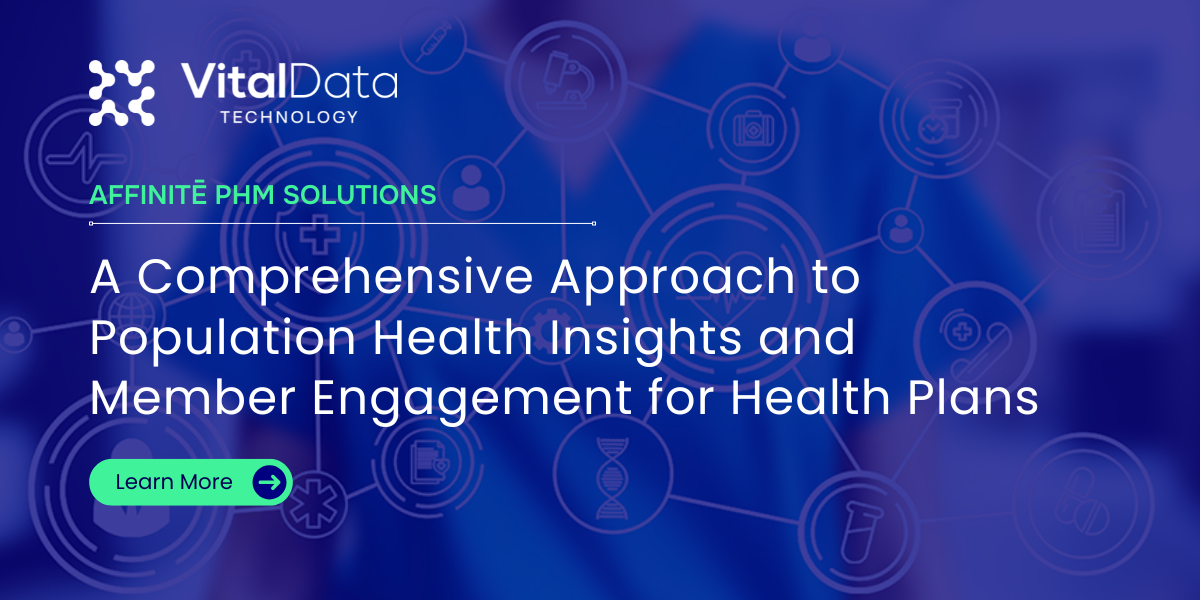
The healthcare industry is at a crossroads. With rising costs, increasing population health complexities, and an abundance of underutilized data, many health plans are struggling to keep pace with the evolving demands of care management. Traditional analytics solutions, which often rely on retrospective data, are no longer sufficient to meet the needs of today’s health plans. This is where predictive analytics is emerging as a game-changer, offering health plans the ability to move from reactive care to proactive, data-driven decision making.
Below, we’ll explore the challenges of reactive analytics, the benefits of predictive modeling, and how health plans can harness these advancements to redefine outcomes and operational efficiency.
The Problem with Reactive Analytics
For years, health plans have relied on retrospective analytics to guide their decisions. These systems review historical claims and clinical data to identify trends and formulate strategies. While valuable, this approach has significant limitations, including:
- Delayed Insight Delivery: Traditional analytics often identify issues long after they’ve occurred, reducing opportunities for timely intervention.
- Underutilized Data: Despite collecting vast amounts of information, many health plans struggle to fully leverage data from claims, electronic medical records (EMR), social determinants of health (SDoH), and other unconventional sources.
- Broad Population Segmentation: Retrospective analytics typically group members into large cohorts, making it harder to target interventions effectively.
- Escalating Costs: Without the ability to predict and prevent high-risk scenarios, health plans often face rising costs from avoidable hospitalizations, chronic disease complications, and other costly outcomes.
The result is a reactive care strategy that leaves health plans playing catch-up, rather than proactively managing their populations’ health needs.

The Power of Predictive Analytics
Predictive analytics leverages advanced algorithms and machine learning to analyze historical and real-time data, identifying patterns and trends that can help forecast future outcomes. In the context of population health management, this approach enables health plans to proactively address challenges, drive better results, and optimize care delivery at every level. When implemented effectively, predictive analytics unlocks a range of strategic benefits that improve outcomes for members, providers, and organizations alike, including:
Proactive Risk Identification - By evaluating a diverse range of data sources - including claims, EMR, pharmacy data, and social determinants - predictive models can pinpoint members at heightened risk for costly or complex health events well before traditional analytics would, facilitating tailored early interventions that lead to improved outcomes, lower readmission rates, and prevention of catastrophic events.
Data-Driven Decision Making - With scalable access to comprehensive, up-to-date information, health plans can move beyond intuition or retrospective trends and harness real-time analytics to forecast emerging risks, allocate resources more efficiently, and make informed strategic decisions. This translates to measurable improvements not only in operational efficiency and cost controls, but also in the quality of member care.
Improved Member Engagement - Advanced segmentation and predictive targeting allow plans to identify which members will benefit most from specific outreach or programs - enabling highly relevant, personalized touchpoints and optimized engagement strategies. Resulting campaigns are more effective, creating positive experiences for members and delivering significant improvements in health outcomes.
Enhanced Collaboration and Workflow Automation - Predictive analytics drives value only when paired with integration into care management workflows and automation capabilities. By delivering actionable insights directly to clinical and operational teams and automating next-best actions, health plans ensure faster response times, coordinated care, and better collaboration across departments, ultimately elevating the standard of patient care.
This transformation from a reactive model to a predictive, proactive approach gives health plans a powerful edge - providing visibility into tomorrow’s risks today, improving the ability to serve their members, and supporting a data-driven culture that can adapt to ongoing industry evolution.
Beyond Predictive Analytics: The Full Solution
While predictive analytics is a powerful tool, truly transforming population health management requires a holistic solution that addresses persistent industry challenges and maximizes the value of advanced analytics. The most effective solutions go beyond forecasting, bringing together integrated data, intelligent workflows, and automation to drive sustained impact.
Key Differentiators in Predictive Analytics Solutions:
-
Real-Time Workflow Integration: Actionable insights are embedded directly into care management workflows, equipping teams with timely, relevant information at the point of decision—enhancing responsiveness, care coordination, and ultimately the member experience.
-
Intelligent Automation: Advanced platforms leverage rules engines and automation to prompt next-best actions and enable targeted interventions at scale. This efficiency empowers teams to focus on impactful activities rather than manual triage.
-
Proven Performance: Effective predictive analytics solutions deliver measurable improvements, such as faster case identification, higher engagement in high-risk cohorts, and significantly reduced times to intervention—resulting in better health outcomes, smarter resource allocation, and greater operational efficiency.
When predictive analytics is combined with these differentiators, health organizations can move confidently from reactive to proactive, data-driven care management. This empowers teams to identify risks earlier, personalize interventions, and collaborate more effectively for sustainable cost savings and superior member outcomes.
Looking forward, predictive analytics is poised not just to reshape population health management, but to set a new standard for operational agility, clinical quality, and member-centered care. Tools like Affinitē Predictive Insights are paving the way to healthier outcomes, lower costs, and a better member experience. By leveraging real-time analytics, integrated data, and intelligent automation, these solutions enable health plans to proactively identify at-risk individuals, optimize care pathways, and accelerate intervention cycles. Health organizations gain the ability to personalize outreach, improve care coordination across teams, and make data-driven decisions that measurably impact both clinical quality and operational efficiency.




